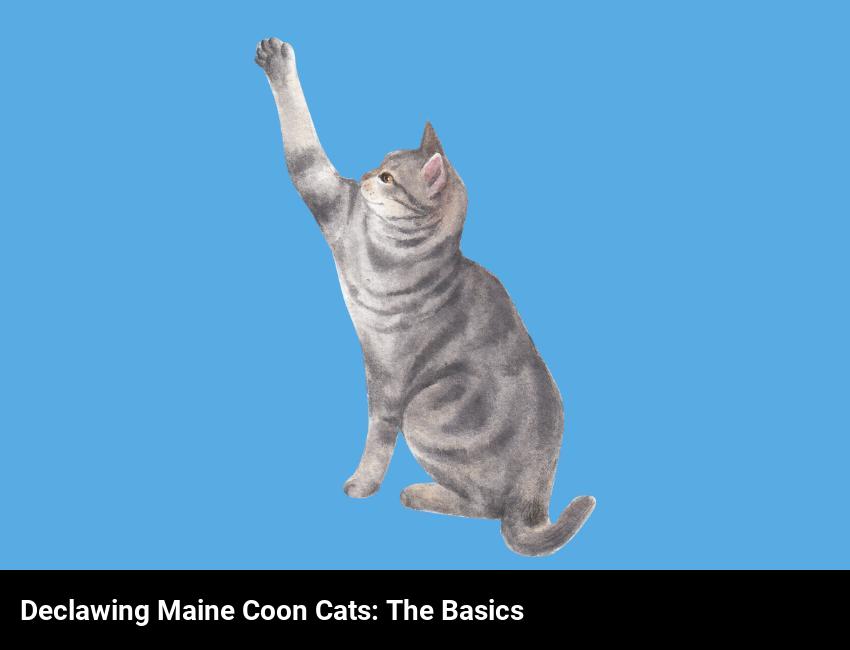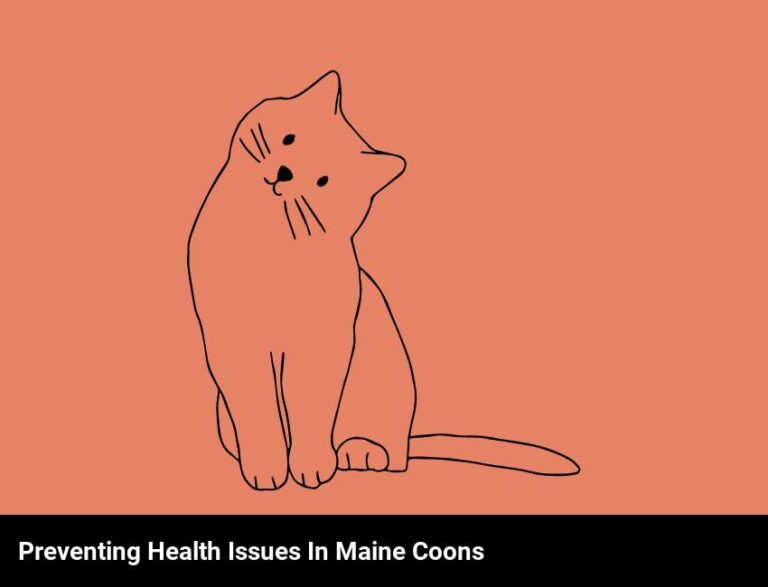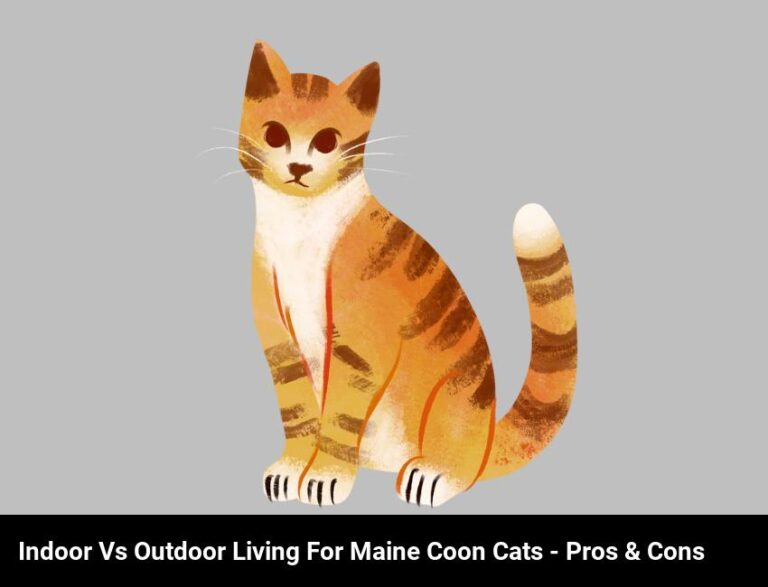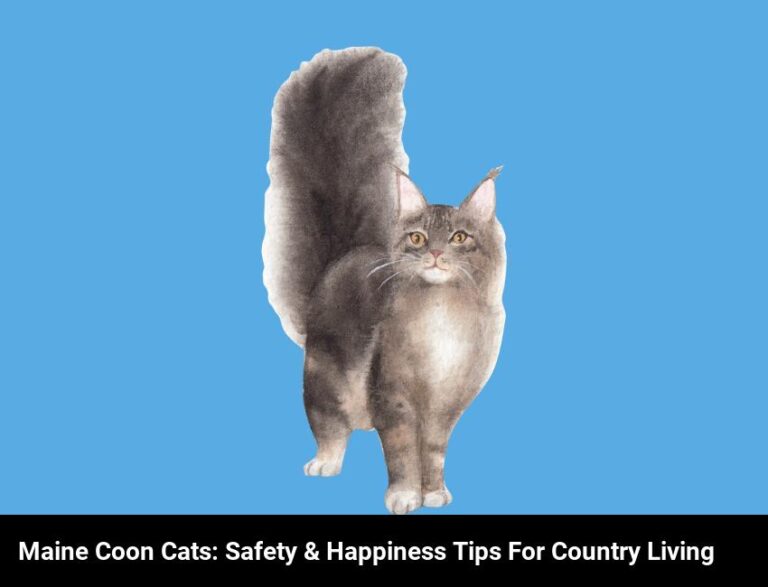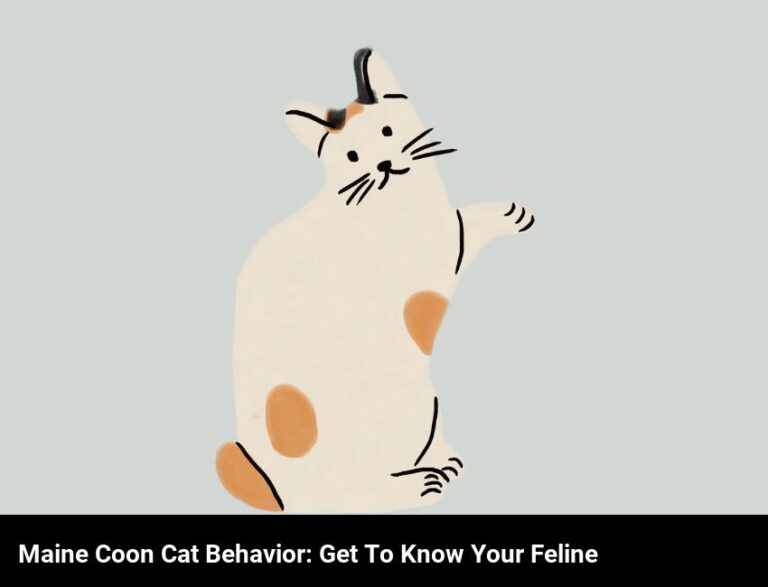Declawing A Maine Coon Cat: Everything You Should Know
Declawing a Maine Coon cat is an important decision that should be considered carefully. It’s important to know that declawing is an invasive procedure and may cause lasting pain, discomfort, and even behavioral issues. You should consult a veterinarian to discuss the risks and benefits before deciding whether or not to declaw.
Having a Maine Coon cat is one of the most rewarding experiences of my life. I love my Maine Coon like she’s a member of the family, and I want to make sure she’s as comfortable and happy as possible! One of the biggest decisions I had to make was whether or not to get her declawed.
I had heard a lot of conflicting opinions on this subject, so I decided to do my own research to find out what is the best thing to do for my beloved Maine Coon. In this blog, I will be sharing my findings with you on declawing a Maine Coon cat. I’ll discuss what declawing is, the different types of declawing procedures, the pros and cons associated with it, the risks and complications, how to prepare your cat for the procedure, the recovery process, and alternative solutions to consider.
What is declawing and is it necessary for maine coon cats?
Declawing is the surgical removal of a cat’s claws and is not necessary for Maine Coon cats. Declawing is inhumane and should not be done unless medically necessary. Declawing is a painful procedure and can lead to long-term health problems for cats, including lameness and an increased risk of behavioral issues.
The Maine Coon is a larger breed of domestic cat that is known for its playful, curious, and loving nature. They are very intelligent and can easily learn to use a scratching post instead of your furniture. With patience and proper training, you can help direct your Maine Coon’s natural scratching instincts away from your furniture and onto a scratching post.
There are several alternatives to declawing that are less invasive and much more humane. Nail trims, claw covers, and soft vinyl caps are all viable options to help keep your furniture safe. Additionally, you can use a spray bottle or a clap of your hands to discourage your Maine Coon from scratching where they shouldn’t.
Declawing is an unnecessary and cruel procedure that should never be performed on a Maine Coon cat or any other cat. If you are concerned about your cat’s scratching behavior, there are plenty of safe and effective alternatives that can help you keep your furniture safe while still allowing your cat to express their natural behavior.
What are the different types of declawing procedures?
When it comes to declawing a Maine Coon cat, there are three common types of procedures used. The three types include full declawing, partial declawing, and soft-paw declawing.
Full declawing, which is also known as onychectomy, is a procedure that involves surgically removing the entire last bone of the toes. This type of declawing is usually done when the cat is between the ages of 8 and 12 weeks old, as it is easier to perform on younger cats.
Partial declawing, also known as a tendonectomy, involves surgically removing the tendon that controls the claws on the cat’s paws. This procedure is typically done on cats over six months old, as their muscles and tendons are developed enough for the surgery.
Soft-paw declawing is a newer procedure that is becoming more popular. This type of procedure involves surgically trimming the cat’s claws instead of removing them. This is a less invasive procedure than full or partial declawing, and typically requires less recovery time for the cat as well.
No matter what type of declawing procedure you choose for your Maine Coon cat, it is important to understand the risks associated with each. Talk to your veterinarian about what type of procedure is best for your cat and the potential risks so that you can make an informed decision.
What are the pros and cons of declawing a maine coon cat?
If you are considering declawing your Maine Coon Cat, there are both pros and cons you should consider. On the plus side, declawing your cat means that your furniture and other belongings will be protected from scratches. It also reduces the risk of scratches to humans and other pets in the household.
On the other hand, declawing a Maine Coon Cat can be painful and traumatic for the cat. It can also lead to long-term issues such as changes in the cat’s behavior, lameness, and pain. Additionally, it can have a detrimental effect on the cat’s ability to hunt, climb and balance.
It is important to remember that declawing should always be used as a last resort. You should first try other alternatives such as nail-clipping, scratching posts, and regular trimming of the cat’s nails. These alternatives are less painful and more humane.
So, while there are pros and cons to declawing a Maine Coon Cat, you should always think carefully before making a decision. Consider all the alternatives, as well as the potential risks and benefits, before taking any action. Ultimately, the decision should be based on what is best for both you and your cat.
What are the possible risks and complications associated with declawing?
Declawing a Maine Coon is a controversial topic. It is important to understand the risks and complications associated with it before making a decision.
The most common risk of declawing is infection. Infection can occur if the procedure isn’t performed properly. It is important to make sure the vet is experienced in performing the procedure to reduce the risk of infection. In addition, giving your cat a course of antibiotics after the procedure can help reduce the risk of infection.
The procedure can also cause some long-term discomfort for your cat. It is normal for cats to experience some pain and swelling after the procedure. Pain can also occur if the incision is not healed properly. It is important to keep an eye on your cat and make sure they are not exhibiting signs of pain or discomfort.
In very rare cases, there is a risk of nerve damage, which can lead to lameness. For this reason, it is important to only have the procedure performed by an experienced vet.
Finally, declawing can cause some behavioural changes in cats. Because cats rely on their claws for self-defence and hunting, removing them can cause them to become stressed and anxious. It is important to closely monitor your cat’s behaviour and provide them with other activities to help them adapt to their new life without claws.
It is important to understand the risks and complications associated with declawing a Maine Coon before making a decision. Be sure to discuss the risks and benefits with your vet to ensure that you are making an informed decision for your cat.
How can i prepare my maine coon cat for the declawing procedure?
Preparing your Maine Coon cat for the declawing procedure is an important step in ensuring a successful and stress-free procedure. Start by visiting your veterinarian for a pre-operative exam and blood work. This will help to identify any underlying health problems your cat may have and allow the veterinarian to tailor the procedure to your cat’s individual needs.
When you bring your Maine Coon cat home, make sure to provide a quiet and comfortable place to rest. Make sure the bedding is soft and free of any sharp objects, like strings or toys, that could cause injury to the area post-declaw. It is also important to keep your cat confined to a single room and away from stairs, or other areas of the house where they could accidentally injure themselves.
In the days leading up to the declawing procedure, provide your cat with easily digestible, high-quality cat food. Avoid food that is high in fiber or protein, as this can make your cat more prone to vomiting after the procedure. Additionally, withhold food for 12 hours prior to the procedure. This will reduce the stress on their digestive system and help to prevent post-operative vomiting.
In the days following the procedure, make sure to monitor your cat for any signs of infection or pain. If your cat shows signs of either, contact your veterinarian immediately. Additionally, provide your cat with a warm, comfortable area to rest and plenty of clean bedding. Lastly, make sure to provide your cat with a safe environment, free of any objects that they could injure themselves on.
By following these guidelines, you can ensure that your Maine Coon cat has a successful and stress-free declawing procedure. With the right care and preparation, your cat can enjoy a happy and healthy life.
What is the recovery process like after declawing?
Having a Maine Coon cat that has been declawed can be a difficult decision to make. But if you do decide to go through with it, it’s important to understand the recovery process afterwards.
The recovery process is not overly complicated, but it does require some commitment from you as the owner. During the healing process, you’ll need to keep an eye on your Maine Coon cat to ensure they are healing properly and without any complications.
You’ll need to keep your Maine Coon cat in a comfortable, quiet area and away from other cats and children. This is so that your Maine Coon cat won’t aggravate the healing process by jumping around or playing too rough. It’s also important to monitor their activity level and keep them from getting too active during the healing process, as this could cause pain or irritation.
The healing process typically takes two to three weeks and during this time you’ll need to bathe your Maine Coon cat every two to three days. This will help to prevent infection and keep the healing process moving along. You’ll also need to keep their claws clean and free of debris.
At the end of the healing process, your Maine Coon cat will be able to resume their normal activities. However, if they are still in pain or experiencing any other symptoms, it’s important to take them to the vet for further examination and treatment.
Overall, the recovery process after declawing a Maine Coon cat is not overly complicated, but it does require some commitment from you as the owner. With the proper care and attention, your Maine Coon cat should heal quickly and be back to their normal activities in no time.
What are some alternatives to declawing a maine coon cat?
If you’ve recently adopted a Maine Coon cat, you may be wondering what other alternatives you have to declawing them. Here are some humane and effective solutions that can help you keep your Maine Coon’s claws from damaging furniture, walls, and other items around your home:
- Trim Their Claws Regularly: Trimming your Maine Coon’s claws on a regular basis is the easiest and most humane alternative to declawing. You can purchase a pair of cat nail trimmers from most pet stores and use them to carefully trim your cat’s nails every few weeks.
- Train Them to Use a Scratching Post: Training your Maine Coon to use a scratching post can help keep their claws away from furniture and other items in your home. You can even rub a bit of catnip on the post to entice them to use it!
- Invest in Claw Caps: If you don’t want to trim your cat’s nails or train them to use a scratching post, you can purchase claw caps which are soft plastic caps that fit over your cat’s claws. These caps are designed to prevent your cat from scratching while still allowing them to walk and play normally.
These are just a few of the alternatives to declawing a Maine Coon cat that are available. All of these solutions are humane and effective, so you can rest assured that your cat’s safety and comfort is not being compromised.
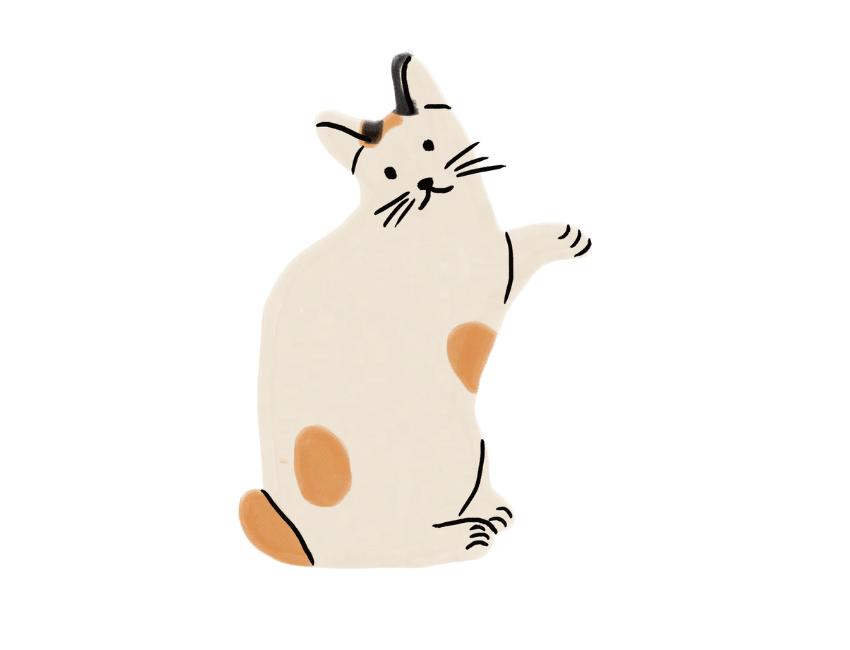
Frequently Asked Questions
How can i ensure my maine coon cat stays healthy after declawing?
To ensure your Maine Coon Cat stays healthy after declawing, make sure they receive adequate pain relief and keep their claws trimmed. Give them a quiet, comfortable place to rest and avoid over-exerting them. Monitor their food and water intake and ensure their litter box is easily accessible. Additionally, check their paws regularly for any signs of infection and provide extra support when they are walking or climbing.
Are there any special care instructions i need to follow when declawing my maine coon cat?
Yes, there are special care instructions you should follow when declawing your Maine Coon Cat. Firstly, only use a qualified and experienced veterinarian, preferably one that specializes in grooming cats. Secondly, keep your cat indoors for a few weeks after the procedure, to ensure the paws have healed properly. Thirdly, regularly clean and apply a healing ointment to your cat’s paws to reduce inflammation and pain. Lastly, provide a soft surface, such as a carpet or cushion, for your cat to rest on while they heal.
Can i expect any behavioral changes in my maine coon cat after declawing?
Yes, declawing a Maine Coon Cat can lead to behavioral changes. Your cat may become more aggressive, may bite more often, and may start to urinate or defecate outside of their litter box. They may also start to avoid human interaction and become more reclusive.
Is declawing a maine coon cat a permanent solution?
No, declawing a Maine Coon Cat is not a permanent solution. The procedure can be reversed through a surgical procedure and the claws will grow back. However, it requires time and money to do the reversal and there is no guarantee the claws will grow back completely. The risks associated with the procedure also remain, so it is important to consider all of the potential side effects before deciding to declaw a Maine Coon Cat.

